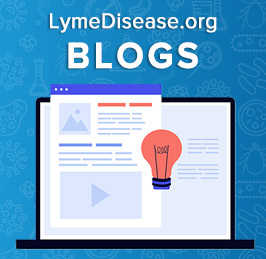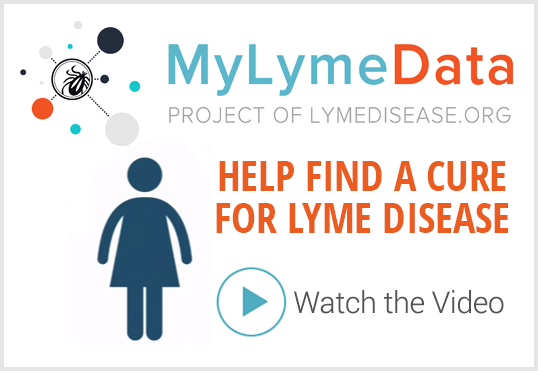Treating Bartonella cleared most of my son’s symptoms of autism

By Debbie Kimberg
For years, I had no idea that I was infected with Lyme disease and related illnesses. There was nothing obvious, like pain or chronic fatigue. Instead, my symptoms were mild and crept up on me insidiously over my lifetime: anxiety, social anxiety, irritability, then migraines, thyroiditis, a little neuropathy in my fingertips and arthritis in my knuckles.
Little did I know that I had stealth infections that I would unsuspectingly transmit to my three sons during my pregnancies. This is known as congenital Lyme disease.
My three boys all exhibited very different presentations. When my oldest son was in preschool, he was charming, driven and precocious. But he was also oppositional, had excessive tantrums, trouble with transitions, picky eating, and was hypersensitive to seams in socks and sunlight.
My middle son was your typical child with ADHD. He was your happy-go-lucky kid in constant motion, hopping or running from place to place. In school, he had difficulty concentrating and with executive function. By middle school, he developed anxiety and a few panic attacks. Then in college, he suffered from multiple bouts of severe depression and chronic fatigue.
However, it was my youngest son, Sammy, who got the shortest end of the stick. He had issues from day one. His first year of development was mostly on track, but as the years progressed, he developed autism spectrum disorder (ASD), multiple vocal and movement tics, ADHD, learning disabilities, low reading comprehension, baby talk, age regression, bedwetting, antisocial behavior, oppositional defiant disorder (ODD), and OCD.
I thought this was just our life. Every family has their problems. Lots of kids have ADHD or ASD. It runs in families, right? My mild issues were under control. I didn’t think there was a single root cause to all of our problems.
Brain on Fire
Then I read Brain on Fire: My Month of Madness, by Susannah Cahalan. The author developed an infection that caused severe psychiatric and physical symptoms.
Inspired by the book, I made an appointment with a doctor of functional medicine to evaluate Sammy and give another opinion about his symptoms. Sammy was 10 years old. After our intake interview, the doctor diagnosed him with Pediatric Acute Neuropsychiatric Syndrome (PANS). He had a majority of the symptoms, 29 in all:
- Oppositional Defiant Disorder (ODD)
- Obsessive Compulsive Disorder (OCD)
- Vocal tics: squealing, grunting, stammering, throat clearing
- Movement tics: a neck roll that first appeared at 6 months old, facial grimace, bending, swaying, spinning, hand flapping when excited, running at inappropriate times
- Baby talk
- Age regression
- ASD
- ADHD
- Learning disabilities, low reading comprehension
- Brain fog
- Anxiety
- Social anxiety
- Depression
- Antisocial (i.e. addicted to electronics, stayed in room, spoke quietly)
- Bedwetting
- Dysgraphia
- Picky eating
- Dilated eyes
- Balance issues
- Gluten and dairy sensitivity
Furthermore, his titers for strep and coxsackie virus were also sky high.
Lyme disease and co-infections
After six months on different antibiotics with little improvement, our doctor ran IGeneX tests on Sammy, his two older brothers, and me, for Lyme disease and co-infections. The results were confusing.
Two boys showed positive for Borrelia burgdorferi; Sammy and I had three indeterminant bands. Sammy was IGG positive for Babesia microti and only my middle son was positive for Bartonella henselae. In time, it was determined that all four of us were positive for the trifecta of tick-borne diseases—Borrelia, Babesia, and Bartonella.
I’ve heard that symptoms of congenital Lyme disease often show in children by age four. This is what we experienced with all three of my boys, though their presentations were vastly different.
An array of treatments–little progress
Once we had the diagnosis of Lyme disease and co-infections, we were optimistic that Sammy would quickly see improvements with treatment. Instead, we found ourselves traversing from doctor to doctor searching for a treatment that would help.
Over a period of five years, Sammy saw ten doctors in all and tried an array of antibiotics, herbals, homeopathics, supplements, and detoxes indicated for Lyme disease or PANS, with little progress.
Because Sammy was slightly better on the treatments versus nothing, we maintained a flicker of hope that eventually we would find a treatment that would work. In some cases, we abandoned certain treatments because his oppositional behavior became intense and untenable.
IVIG
With little progress after five years, we were excited when our neurologist got monthly high dose intravenous immunoglobulins (IVIG) approved by our insurance company. We had high hopes for the treatment.
The first five days after his initial treatment were tough. Like with many other treatments, Sammy became even more oppositional and impossible to deal with. Then, suddenly, as if a light switch had turned on, everything changed. Sammy became happy, social, and agreeable. His many tics were much better.
And, after years of poor memory, suddenly he could remember things! Like what he ate at his friend’s house for dinner and the names of all the kids who’d been with him. Since Sammy hit his teen years, he rarely spoke and only about a few topics obsessively such as when he was going to eat dairy and gluten again or wanting to play electronics all night. Now, he was much more neurotypical!
But the improvements were short-lived, typically lasting for only two weeks after each month’s infusion. And each month, the insurance company fought to discontinue the expensive treatment.
Delayed IVIG infusions wreaked havoc on Sammy’s behavior, causing him to devolve into depressive, oppositional episodes. After five treatments, our insurance company denied additional coverage. Despite such great improvements, Sammy was in the worst straits we had experienced.
What next?
We weren’t sure where to turn. With Sammy’s repeated attempts to run-away to ‘live with the beggars’ because our family rules were unbearable, we tried to check him into the psychiatric ward of a local children’s hospital. When the ER psychiatrist refused to admit him, we began searching for a long-term residential facility to keep him safe. My husband and I were heartbroken. How could our son see such dramatic improvements with IVIG, then so quickly become depressed and intolerant of everything around him?
After losing all hope from the failed IVIG treatment, our functional medicine doctor asked if we’d like to try disulfiram, a drug recently found to show great promise in treating Lyme and Babesia. She wasn’t aware of any other children who had tried it and expected Sammy would be one of the first.
It seemed like a longshot, but with no other options, what did we have to lose?
Disulfiram
The decision changed Sammy’s life. After one dose of disulfiram, Sammy’s oppositional behavior disappeared, his worst symptom at the time. No longer did he badger us for more dairy or gluten, insist on playing games all night, or threaten to run away. Suddenly, he was happy, agreeable, and more social. The overnight improvement of just those few symptoms was a miracle for our family life. We knew we were on the right track!
A few other symptoms improved on disulfiram during the six-month treatment: picky eating, dilated eyes, dysgraphia, most of bedwetting, antisocial behavior, and depression.
Yet, along with those important improvements, other symptoms intensified. These included OCD, age regression, baby talk, vocal and movement tics, brain fog, learning disabilities and ADHD. These symptoms proved annoying, but Sammy was happy and the symptoms were tolerable.
Targeting Bartonella
Despite Sammy’s negative Bartonella test, we suspected it due to his OCD. We treated it next using an antibiotic protocol that included rifampin/rifabutin, clarithromycin, and minocycline. Again, we saw a major improvement in a very short time.
Suddenly, Sammy’s baby talk, age regression, hyperactivity, and eight vocal and movement tics resolved. These symptoms seemed intrinsically tied as they all cleared almost overnight. Sammy was thrilled when at six weeks into treatment, his gluten and dairy sensitivity resolved. He could eat whatever he wanted again with no worsening behavior! Bartonella treatment also fully cleared his bedwetting. None of our doctors seemed aware that these symptoms were caused by Bartonella. In fact, seventy percent of Sammy’s ASD symptoms appeared to be caused by Bartonella. It was an important discovery.
Good-bye to Special Ed classes
The most notable improvement came after four months of antibiotic treatment for Bartonella. Sammy, who had been in special education since preschool due to learning disabilities and low reading comprehension, now began doing his homework independently. And his grades moved from low Cs to high As.
Remarkably, on statewide testing, he went from a fifth-grade reading level one year earlier to a tenth-grade level last spring. His IQ rose six points into the average range. And he suddenly passed out of his pragmatic language skills/social skills class, which he had made little progress in throughout his life. (Pragmatic language skills are knowing what to say–and how and when to say it.)
I’m pleased to share that the impossible happened. Last fall, in 11th grade, the school moved Sammy out of special education and into all grade-level classes, an exceptional outcome that was beyond our expectations. It was a first for his high school and an accomplishment that Sammy takes great pride in.
Learning disabilities due to brain fog?
In hindsight, the learning disabilities were caused by severe brain fog. Once the brain fog lifted, his IQ, executive functioning, and learning abilities returned to normal. Unlike what I had been told by many professionals, low executive function was not due to improper development of his frontal lobe. Instead, the AD in ADHD was due to severe brain fog and was treatable.
Furthermore, although Sammy had taken social skills classes every year since kindergarten, he had never shown improvement until he was treated for Borrelia and Bartonella. Now, on his own accord, Sammy wanted to come out of his room to hang out with the family. Our quiet, reclusive son became the most talkative one at the dinner table, leading family conversations on a host of new topics we had no idea he had knowledge of, like Simon Cowell, Kobe Bryant, and inflation!
Today, Sammy is studying for his ACTs and planning to attend a four-year college. This was unthinkable 18 months ago, when we expected Sammy to need lifetime care and be unable to hold a job.
Sammy is 80% recovered from ASD and is still undergoing treatment to resolve three remaining symptoms out of twenty-nine: OCD, neck roll tic, and social behaviors. Sadly, his social behavior regressed seven months after finishing the six-month disulfiram protocol, so we are retreating the Borrelia and seeing some improvement.
What happened to our son is a medical miracle. I am so grateful to every doctor who helped us.
I have written a memoir that I am working to publish to explain our long, difficult, but ultimately successful journey. Even at 17-years-old, it’s possible to reverse learning disabilities and see a great recovery from ASD!
Debbie Kimberg updates their story on Instagram at @HijackedBrains.




















We invite you to comment on our Facebook page.
Visit LymeDisease.org Facebook Page